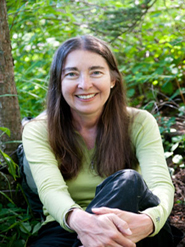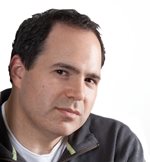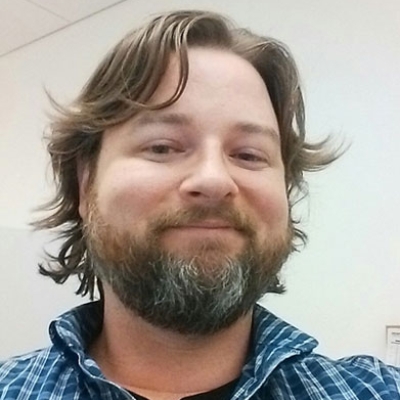 Cristina Eisenberg, author of The Wolf's Tooth and The Carnivore Way
Cristina Eisenberg, author of The Wolf's Tooth and The Carnivore Way
There are many Island Press books that I love, but for this assignment, I want to focus on this relatively unknown gem of a book:

One of my favorite recent Island Press books is Forgotten Grasslands of the South by Reed Noss, which depicts the fascinating natural history of a relatively unknown and under-appreciated habitat type in the southern US. Worldwide, grasslands are critically-imperiled biodiversity hotspots that are focal points for conservation. In this important book, Noss reminds us that some of the most pressing conservation issues lie in our own backyard.
 F. Kaid Benfield, author of People Habitat
F. Kaid Benfield, author of People Habitat

In Urban Acupuncture, Jaime Lerner departs from the usual literature on the details of community-building in order to share with us his love of cities, and their magic. It’s the most accessible book on cities that I know, and one of the most delightful.
 Marc Kuchner, author of Marketing for Scientists
Marc Kuchner, author of Marketing for Scientists
 Don't Be Such a Scientist is the Island Press book that first grabbed me. It tells of one scientist's journey from lab bench to Hollywood and the cultural divide he struggled to cross to succeed as a filmmaker. It helped me understand myself as a scientist and my audience as a science communicator.
Don't Be Such a Scientist is the Island Press book that first grabbed me. It tells of one scientist's journey from lab bench to Hollywood and the cultural divide he struggled to cross to succeed as a filmmaker. It helped me understand myself as a scientist and my audience as a science communicator.
Emily Davis, Island Press Editor
 I’ve begun to consider acquiring books about food and sustainability a personal health hazard. Reading endless research and analysis of our current food system can make you a little paranoid: what pesticides are on that apple? Did the chicken that laid that egg ever see sunlight? What is that hybridized wheat doing to my gut microbiome? That’s why I so thoroughly appreciate Food, Genes, and Culture: Eating Right for Your Origins by Gary Paul Nabhan. In the midst of all the confusion about how food impacts health, Nabhan takes us back to our roots. He examines the science of why food affects different individuals in fundamentally different ways. If you’ve ever wandered onto a nutrition site and been baffled by all the conflicting experiences—few political or religious debates rival the intensity of vegan versus paleo blog comments—Nabhan can offer you a new way of thinking about health. He argues that where and how your ancestors ate laid the DNA blueprint for how foods will affect you. This knowledge cannot only help individuals, but shape our policy approaches to pressing issues such as diabetes, obesity, and heart disease. Whenever my head is spinning from the latest nutrition or environmental health study, I can turn to Nabhan for a little comfort food.
I’ve begun to consider acquiring books about food and sustainability a personal health hazard. Reading endless research and analysis of our current food system can make you a little paranoid: what pesticides are on that apple? Did the chicken that laid that egg ever see sunlight? What is that hybridized wheat doing to my gut microbiome? That’s why I so thoroughly appreciate Food, Genes, and Culture: Eating Right for Your Origins by Gary Paul Nabhan. In the midst of all the confusion about how food impacts health, Nabhan takes us back to our roots. He examines the science of why food affects different individuals in fundamentally different ways. If you’ve ever wandered onto a nutrition site and been baffled by all the conflicting experiences—few political or religious debates rival the intensity of vegan versus paleo blog comments—Nabhan can offer you a new way of thinking about health. He argues that where and how your ancestors ate laid the DNA blueprint for how foods will affect you. This knowledge cannot only help individuals, but shape our policy approaches to pressing issues such as diabetes, obesity, and heart disease. Whenever my head is spinning from the latest nutrition or environmental health study, I can turn to Nabhan for a little comfort food.
Jason Leppig, Island Press Marketing Manager
 We publish lots of books on ecosystem science and management and since I’m not a scientist, it’s often difficult to wrap my mind completely around the information in some of these books (see Panarchy). But once in a while we’ll get an author that delivers a book that’s more of a journey than an academic lecture of facts and figures. In Intelligent Tinkering, Bob Cabin writes as if you’re looking over his shoulder as he explores the Ka’upulehu Preserve in Hawaii. Cabin’s vivid imagery and narrative style make a potentially stale subject (science vs. practice) into as entertaining a read as most fiction books. Until this book, I never thought I would want to understand more about the intricacies of ecological restoration science and on-the-ground practice. Pick it up; you’ll be surprised.
“Filled with imagery and insight, the book has the flair of a best-selling novel.” –Andre Clewell, President Emeritus, Society for Ecological Restoration
We publish lots of books on ecosystem science and management and since I’m not a scientist, it’s often difficult to wrap my mind completely around the information in some of these books (see Panarchy). But once in a while we’ll get an author that delivers a book that’s more of a journey than an academic lecture of facts and figures. In Intelligent Tinkering, Bob Cabin writes as if you’re looking over his shoulder as he explores the Ka’upulehu Preserve in Hawaii. Cabin’s vivid imagery and narrative style make a potentially stale subject (science vs. practice) into as entertaining a read as most fiction books. Until this book, I never thought I would want to understand more about the intricacies of ecological restoration science and on-the-ground practice. Pick it up; you’ll be surprised.
“Filled with imagery and insight, the book has the flair of a best-selling novel.” –Andre Clewell, President Emeritus, Society for Ecological Restoration
Courtney Lix, Island Press Associate Editor
 I used to live in a dense, urban neighborhood in Washington DC. One day, walking to the grocery store I noticed someone had spilled a bag of peaches on the sidewalk. Then I looked up and realized, with delight, that the peaches had dropped from the limbs of an improbably large peach tree growing on the corner. Cities can be full of surprising possibilities for growing food, a subject which touches on health, cooking, equity, and sustainability. In Darrin Nordahl’s revised and expanded edition of Public Produce: Cultivating Our Parks, Plazas, and Streets for Healthier Cities, he delves into the idea of bringing agriculture back into our cities, and the myriad creative ways it can be accomplished. Darrin is one of the most dynamic writers I’ve had the pleasure of working with as an editor, and his descriptions of produce grown in humble places from median strips in Los Angeles to the State House grounds in Montpelier, Vermont to Seattle’s ambitious Food Forest, will inspire you as much as they make your mouth water.
I used to live in a dense, urban neighborhood in Washington DC. One day, walking to the grocery store I noticed someone had spilled a bag of peaches on the sidewalk. Then I looked up and realized, with delight, that the peaches had dropped from the limbs of an improbably large peach tree growing on the corner. Cities can be full of surprising possibilities for growing food, a subject which touches on health, cooking, equity, and sustainability. In Darrin Nordahl’s revised and expanded edition of Public Produce: Cultivating Our Parks, Plazas, and Streets for Healthier Cities, he delves into the idea of bringing agriculture back into our cities, and the myriad creative ways it can be accomplished. Darrin is one of the most dynamic writers I’ve had the pleasure of working with as an editor, and his descriptions of produce grown in humble places from median strips in Los Angeles to the State House grounds in Montpelier, Vermont to Seattle’s ambitious Food Forest, will inspire you as much as they make your mouth water.
Executive Assistant, Shaina Lange
 Particularly as someone who was new to city life, new to Island Press, and new to the intellectual sphere of environmental issues up until two months ago, Alexandros Washburn’s The Nature of Urban Design gave me a new perspective on urban living. I recently moved from a tiny suburb in Ohio to now living in northern Virginia and working in Washington, D.C. Feeling lost amongst the high-rises, metro maps, and street alphabet, I thought of myself as just one in a city of millions. The Nature of Urban Design, however, made me realize how important each “one” of us are in creating communities and making our cities prosperous.
At first glance, I was immediately engaged by the bright orange cloth cover and the stimulating illustrations that he incorporates into the content. With incredibly accessible content for residents, students, professionals, and inquiring minds of urban architecture, design, and planning, Washburn’s exploration of the importance of urban design is fascinating. He emphasizes the small differences that both residents and professionals can make that can enable their cities to prosper. The book analyzes how cities and their individuals have the ability to shape community life and social equity. Especially in the face of natural disaster, the resilience of a city so heavily depends on the cohesiveness of the community.
Washburn uses his experience in city planning to demonstrate the concept of community. Referencing the revival of his own neighborhood in Brooklyn after Hurricane Sandy’s devastation, as well as smaller inspiring projects such as the development of the Harlem Children’s Zone, he gives the reader insight into real urban design processes and the enormous impact each decision can have on the people.
Particularly as someone who was new to city life, new to Island Press, and new to the intellectual sphere of environmental issues up until two months ago, Alexandros Washburn’s The Nature of Urban Design gave me a new perspective on urban living. I recently moved from a tiny suburb in Ohio to now living in northern Virginia and working in Washington, D.C. Feeling lost amongst the high-rises, metro maps, and street alphabet, I thought of myself as just one in a city of millions. The Nature of Urban Design, however, made me realize how important each “one” of us are in creating communities and making our cities prosperous.
At first glance, I was immediately engaged by the bright orange cloth cover and the stimulating illustrations that he incorporates into the content. With incredibly accessible content for residents, students, professionals, and inquiring minds of urban architecture, design, and planning, Washburn’s exploration of the importance of urban design is fascinating. He emphasizes the small differences that both residents and professionals can make that can enable their cities to prosper. The book analyzes how cities and their individuals have the ability to shape community life and social equity. Especially in the face of natural disaster, the resilience of a city so heavily depends on the cohesiveness of the community.
Washburn uses his experience in city planning to demonstrate the concept of community. Referencing the revival of his own neighborhood in Brooklyn after Hurricane Sandy’s devastation, as well as smaller inspiring projects such as the development of the Harlem Children’s Zone, he gives the reader insight into real urban design processes and the enormous impact each decision can have on the people. 

